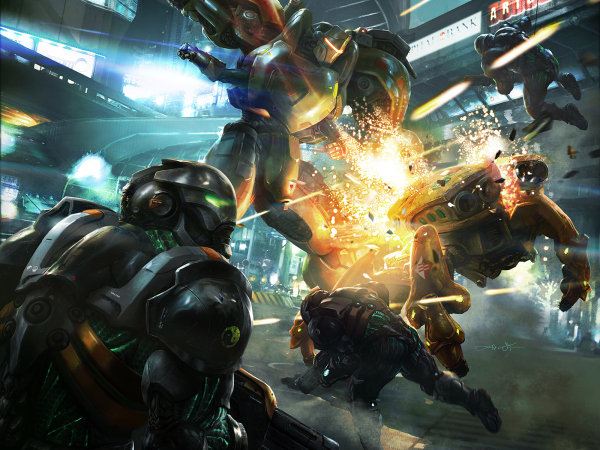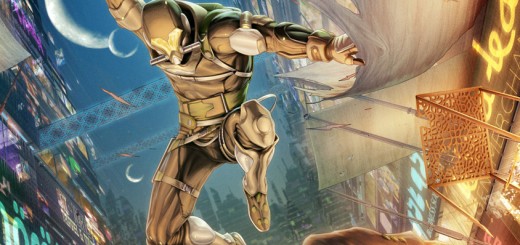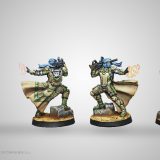Fireside chats: Counting the dice and modifiers
Good evening, friends.
In this new series of articles, we will explore the advanced topics that will make your game a more enjoyable experience. We will talk about things such as dirty tricks or underhanded tactics but also meta-game elements such as list building. We will try to evaluate certain plays and game-play elements, such as TAGs or HI in the ITS environment.
The dice are one of the basic mechanics of Infinity. Master the dice and the modifiers and you have mastered most of what Infinity is about. That does not mean that I suggest using cooked dice or some other way of manipulating the results. What I do suggest, however, is manipulating the odds.
The modifiers to the die roll can be negative and positive, but they can never exceed 12 either way. In an ideal situation, you’d want yourself having +12 to hit and -12 to your opponent. Such a situation can most of the times happen only in theory (a linked team leader of a unit of 5 men attacking a target using a shotgun type weapon, a target that has no cover and was previously marked by a Forward Observer) but should be the ideal you are aspiring towards.
95% of the face to face rolls you will be doing will be +3/-3 rolls, i.e +3 for positive range and -3 for the enemy’s cover. Both of these modifiers are easily changed in your favour, the first one by simply moving toward or from the enemy, the second one by flanking, if possible.
However, in order to maximize your odds of success you want to approach the enemy at a range that favours your weapon and is disadventageous to the weapons he has. With the profilferation of pistols in this edition, hardly anyone will be forced to use their HMG in the -3 range of 0-8 inches, however the difference in 4 steps of damage is no small thing to consider, so sometimes it is worth it to take the negative modifier and have a higher possible damage output.
As in many wargames, it helps to know the weapon ranges and how they actually measure on the table by heart. Experienced players will very often have a “measuring tape in their eye”, i.e they are able to accurately measure the distance between models without the use of any measuring equipment. It is part of the game to be able to guesstimate your modifiers, and because there is no pre-measuring, you have to accept that an experienced player will have this advantage over a newbie.
Other modifiers can be relatively easily obtained, such as the +3 for having the target marked by a Forward Observer – or they can be very rare or situational – such as the -3 for Surprise Shot.
What is worth remembering though, that it is not the modifiers that make the game – it’s the dice. As I always tell newbies – it is better to have more dice than to have extra modifiers. More dice mean that if you’re lucky, you can dish out more damage. It is usually better, for example, to shoot with 4 dice at -3 rather than with 3 dice at no modifier. At -6 on 4 dice and 3 on no modifier, you can start thinking about the odds and how lucky you are feeling.
One of the units that rely on gambling the odds are the various flavours of Total Reaction remotes. Having rather mediocre statistics, they use their full Burst in both the Active and the Reactive turns. They come in 2 variations, but are most often fielded equipped with an HMG. That means that there are certain ranges (0-8, 0-16 and 32+) where an enemy trooper equipped with a weapon with better weapon ranges (0-16 Combi or Shotgun or 32+ – Sniper Rifle) can stack so many negative modifiers that the Drone will be shooting at -9. I usually take that shot instead of dodging anyway – I count on a crit happening and the drones dodge with a negative MOD of -3 on top of that. I know that mathematically what I will say now is not entirelly correct, but I expect 4 dice to have a 20% crit chance (4×5%). If you manage to stack the modifiers for the drone to -12, however, (Surprise shot, being in negative range of their HMG and TO Camo, or Surprise shot, being in cover and in neutral range of their HMG, TO camo), the Drone will have no other choice but to Dodge.
It is generally better to shoot than dodge in ARO – shooting can harm the enemy and remove the threat permanently, while dodging usually just postpones the time of your execution. Keeping that in mind, however, there are situations, when dodging will be better than shooting – when you are out of cover and want to improve your situation, when you want to go prone without risking damage that comes before the Guts that you plan to fail or when the enemy is a 2 or more Wound enemy and you can’t reliably kill him with ARO fire anyway.
A good player will always keep the modifiers in the back of his mind, using them to his advantage and only attacking when the time is right. After all, there are five essentials for victory and one of them is to know when to fight and when not to fight. Be sure to tell use what you think about dice and probability in the comments below!



















Thank you for the article! I am loving the new series. You thing that you did not bring up when talking about keeping the odds in your favor is the active vs reactive turn. I always try to use my active turn to kill enemies and my reactive turn to hold positions and block avenues of approach. This is because 2,3,4 burst is better than 1, because of this the odds are in your favor on your active turn. Some models can avoid this such as the totel reactions drone and misslie launchers (burst 1) anyways. Also not once did you drop a hunger game reference. May the odds ever be in your favor… Thanks again keep up the great reads!
Great article as always 🙂
Keep the good job, on this amazing game
Glad you liked it guys!
@Chad Tompkins That’s correct, I didn’t talk the active vs. reactive turn, didn’t think about it at the time of writing. Good analysis. In regards to hunger games, well I didn’t read/watch it, so…. 🙂
@Fediuld There’s some more coming in this series in the next weeks, keep your eye out!
To be more specific about the odds :
You’ll do more hits with three dices with no modifier than 4 dices with a -3 modifier if your BS is 11 or less. If it’s 12, on average you’ll achieve the same number of hits. Over 12, 4 shoots at -3 are better than 3 without modifier.
However, 4 shots at -6 will on average leads to less hits than three shots with no modifiers, no matter your BS (unless your BS is 24 or more…).
And this is not the probability of hitting the target, it’s the average number of hits.
Because the probability of landing at least one hit with three shots without modifier is always superior to the probability of landing one hit with four shots with -3 modifier.
Of course this is with normal roll and does not take into consideration the situation of a FtF roll, but you get the idea.